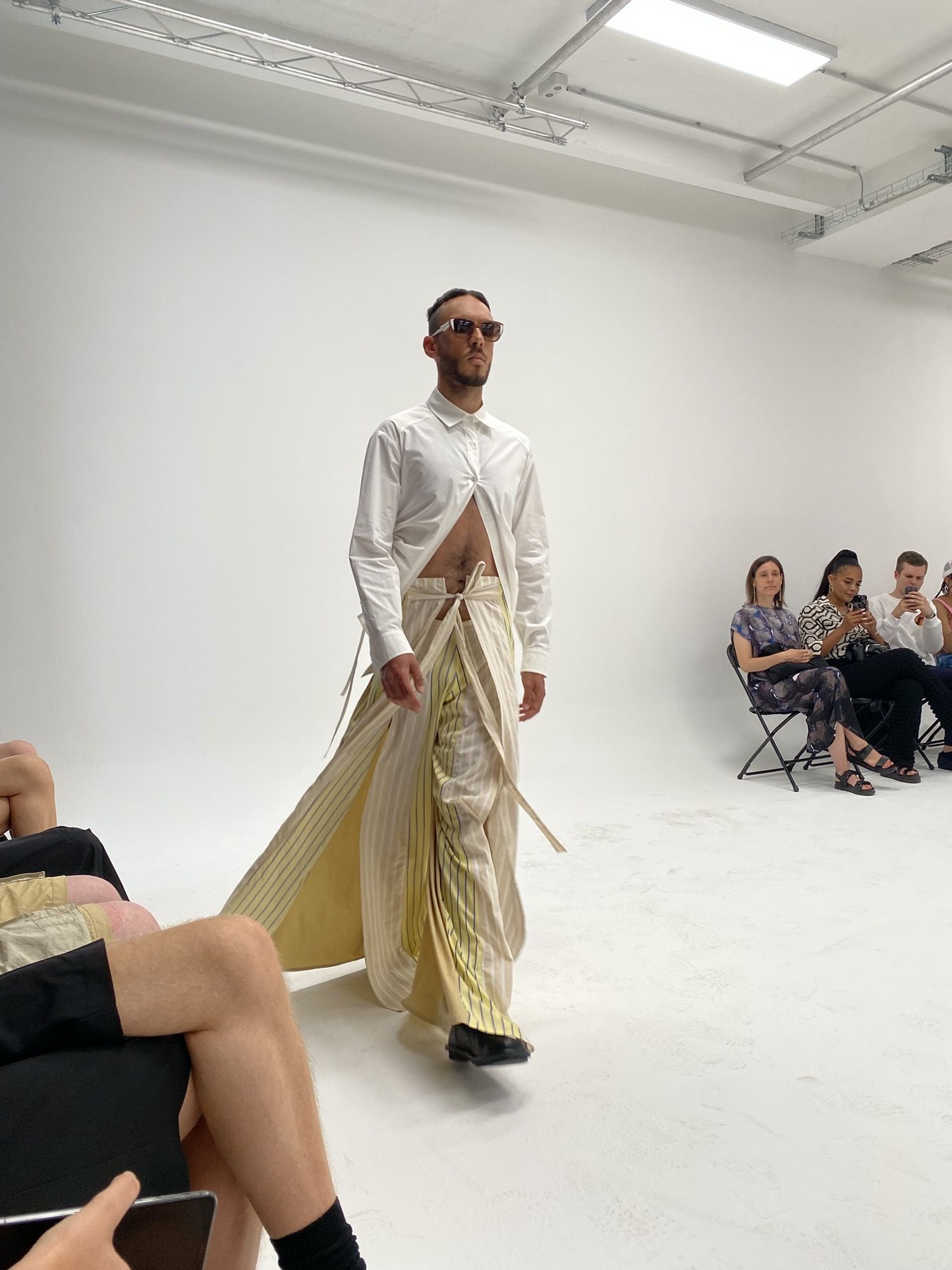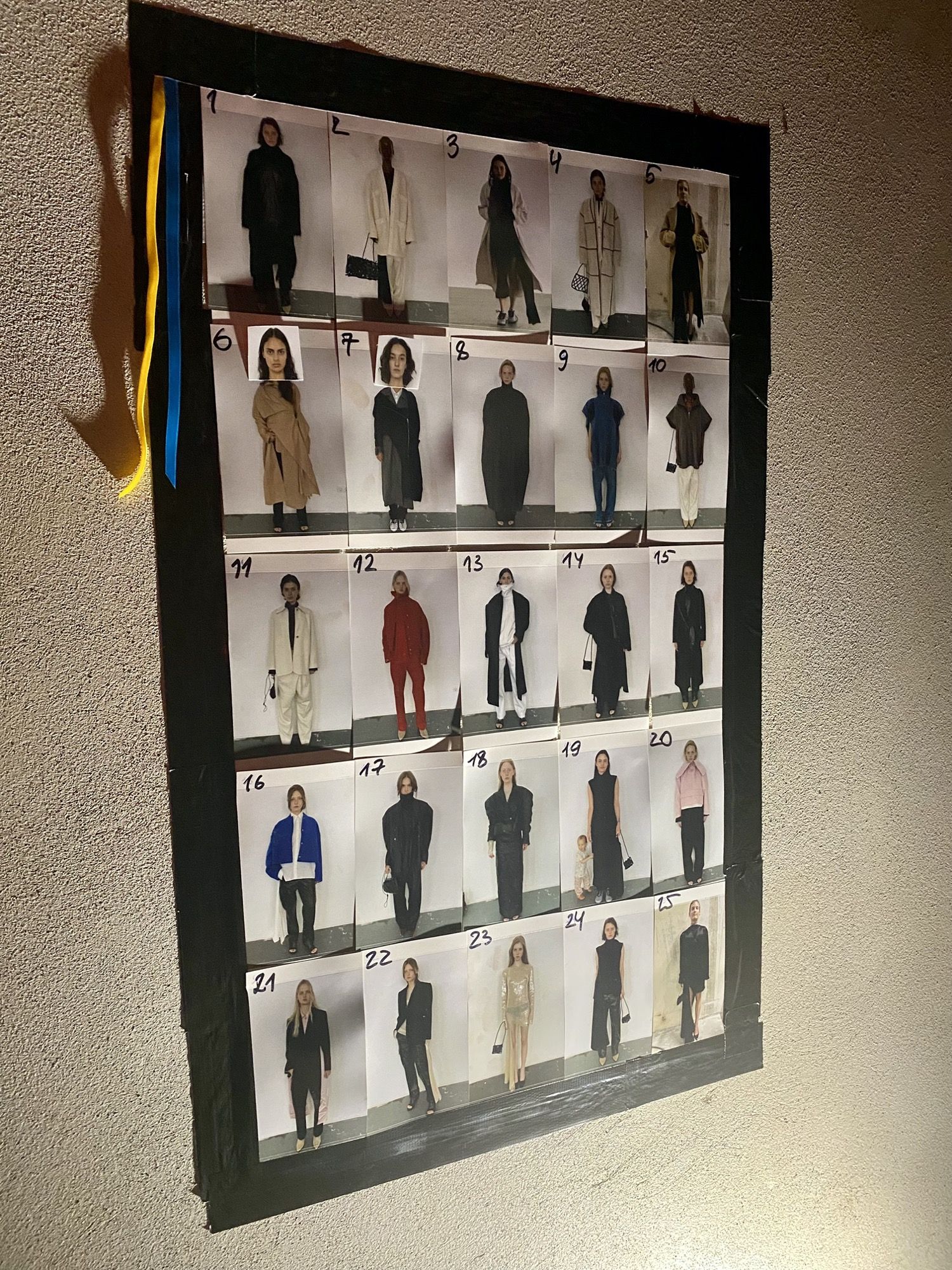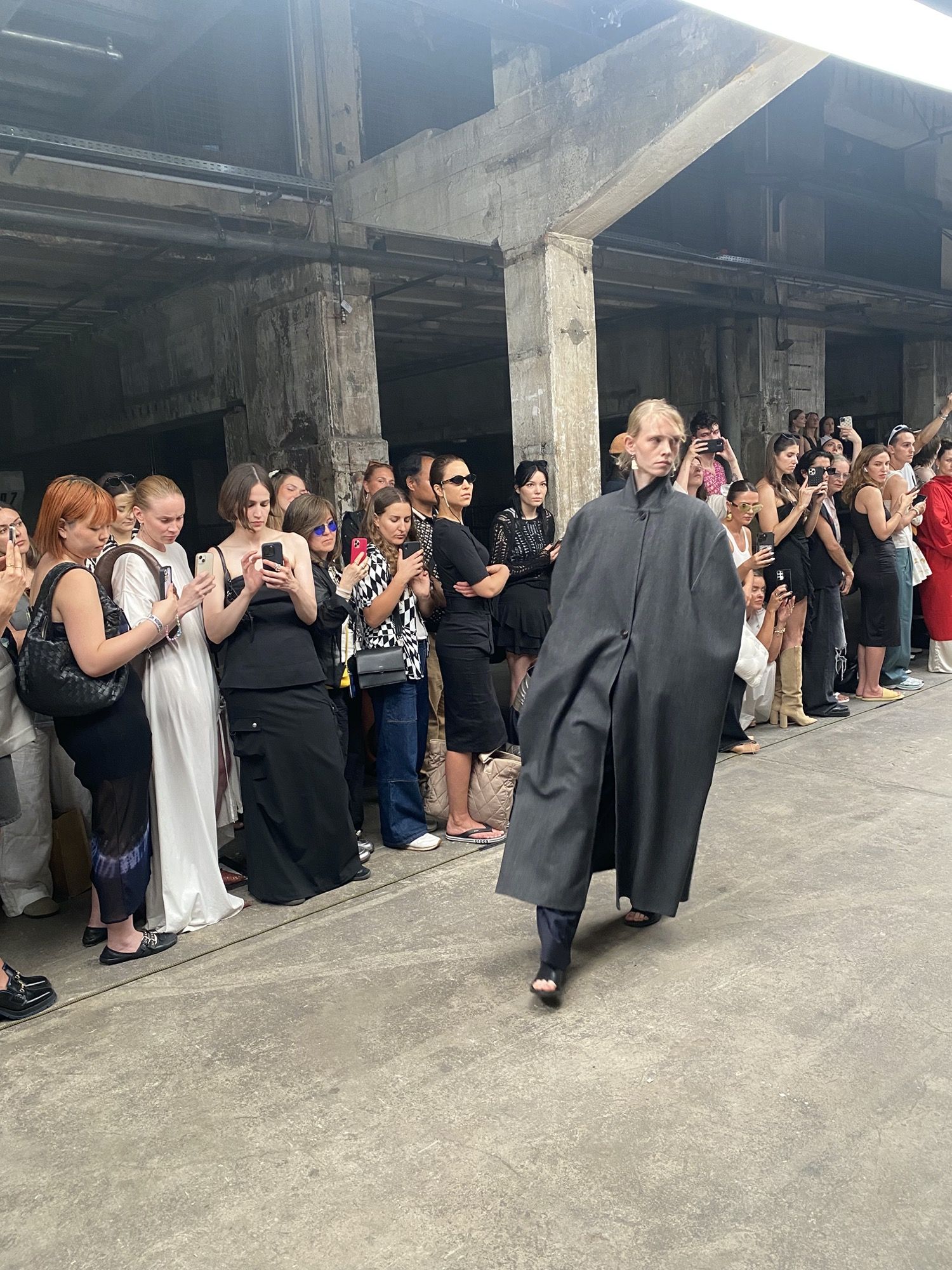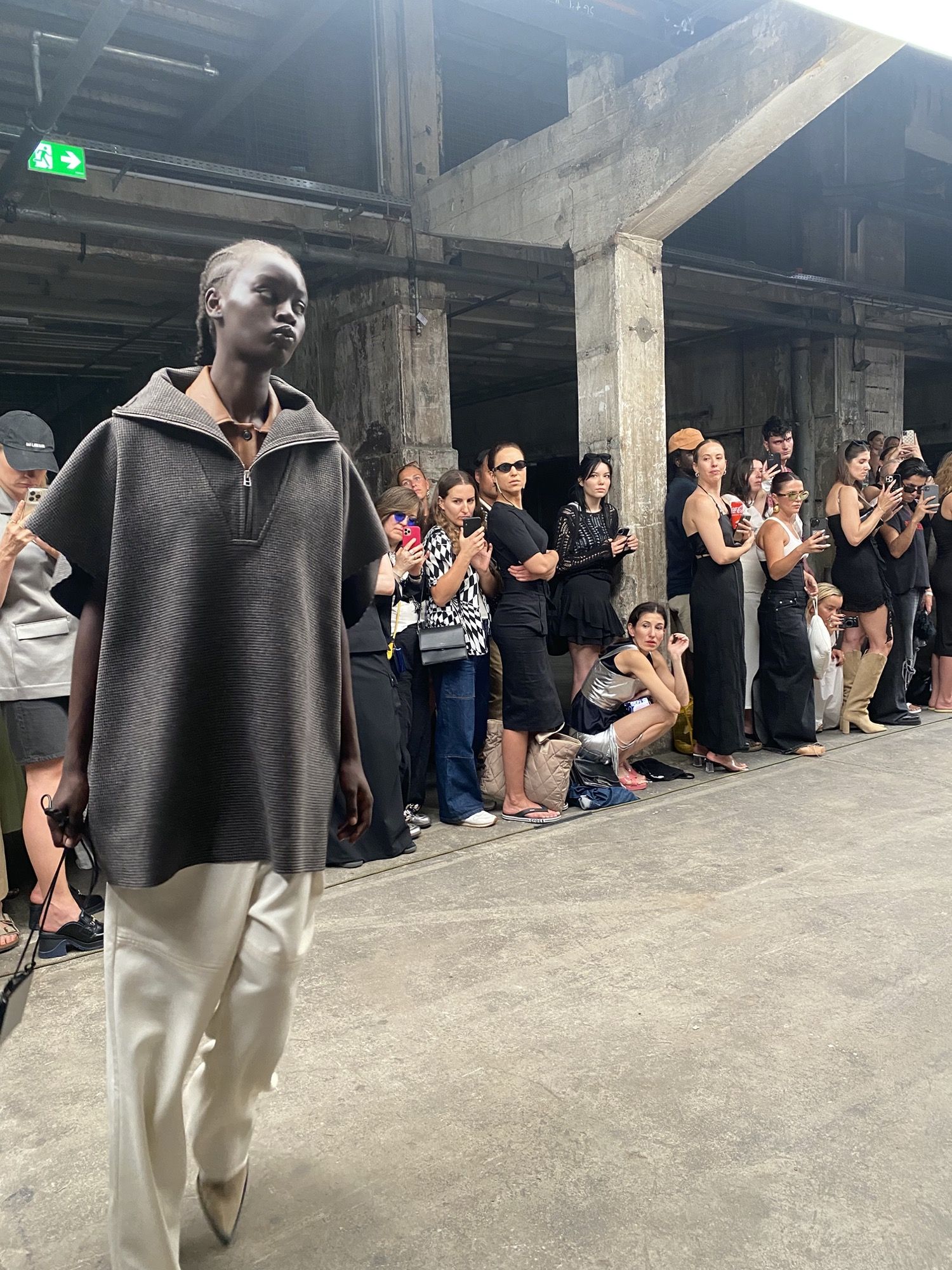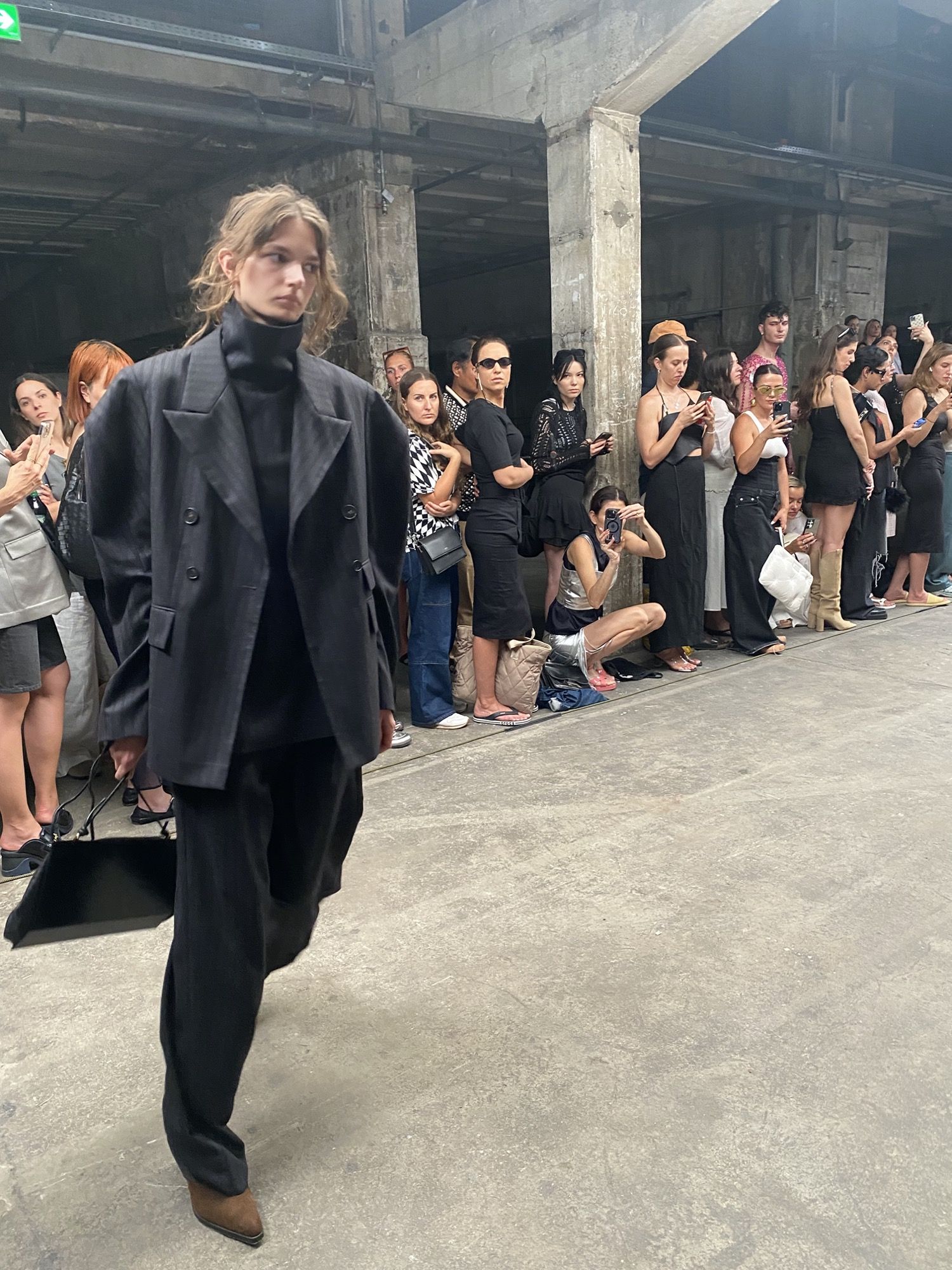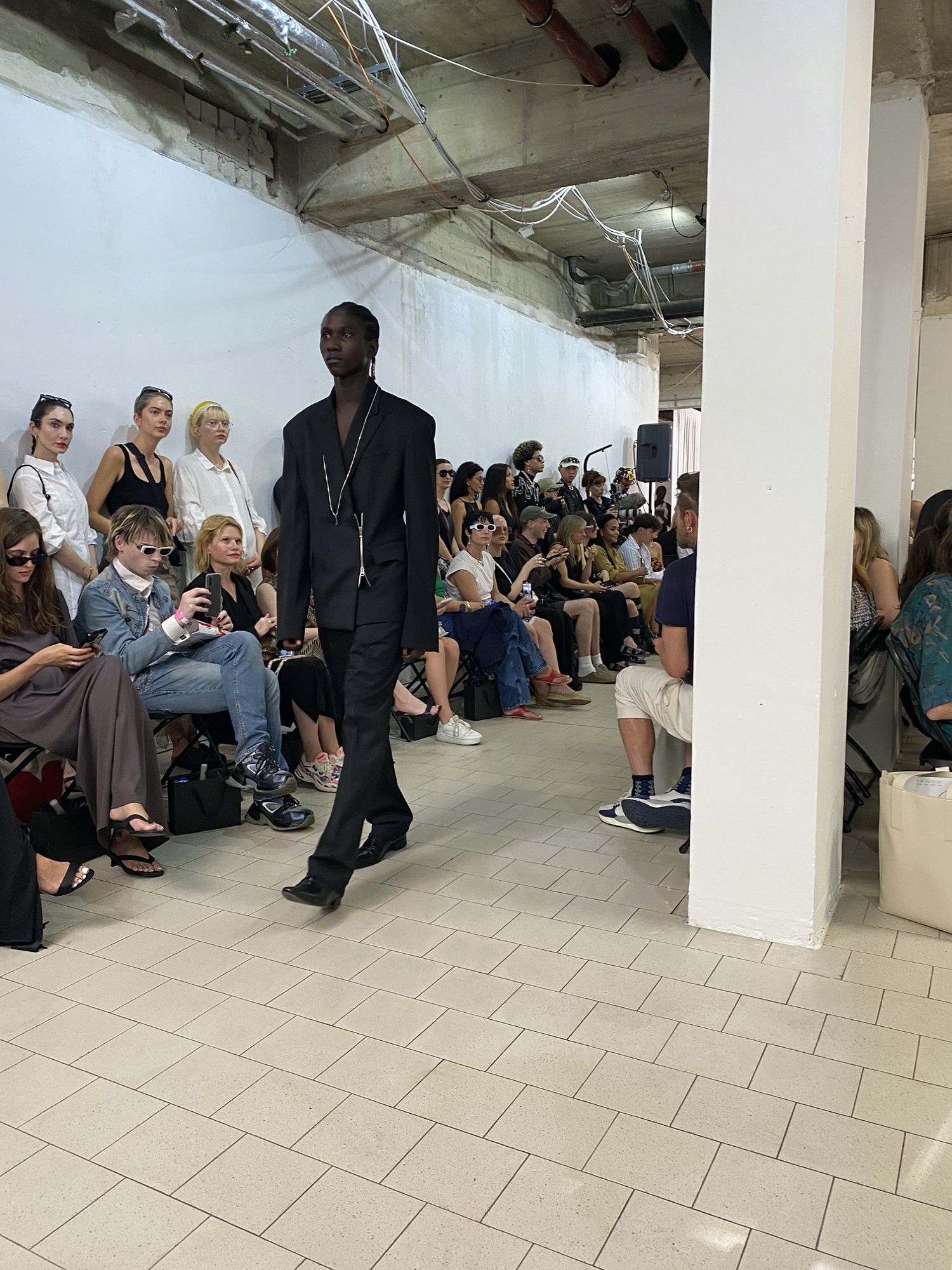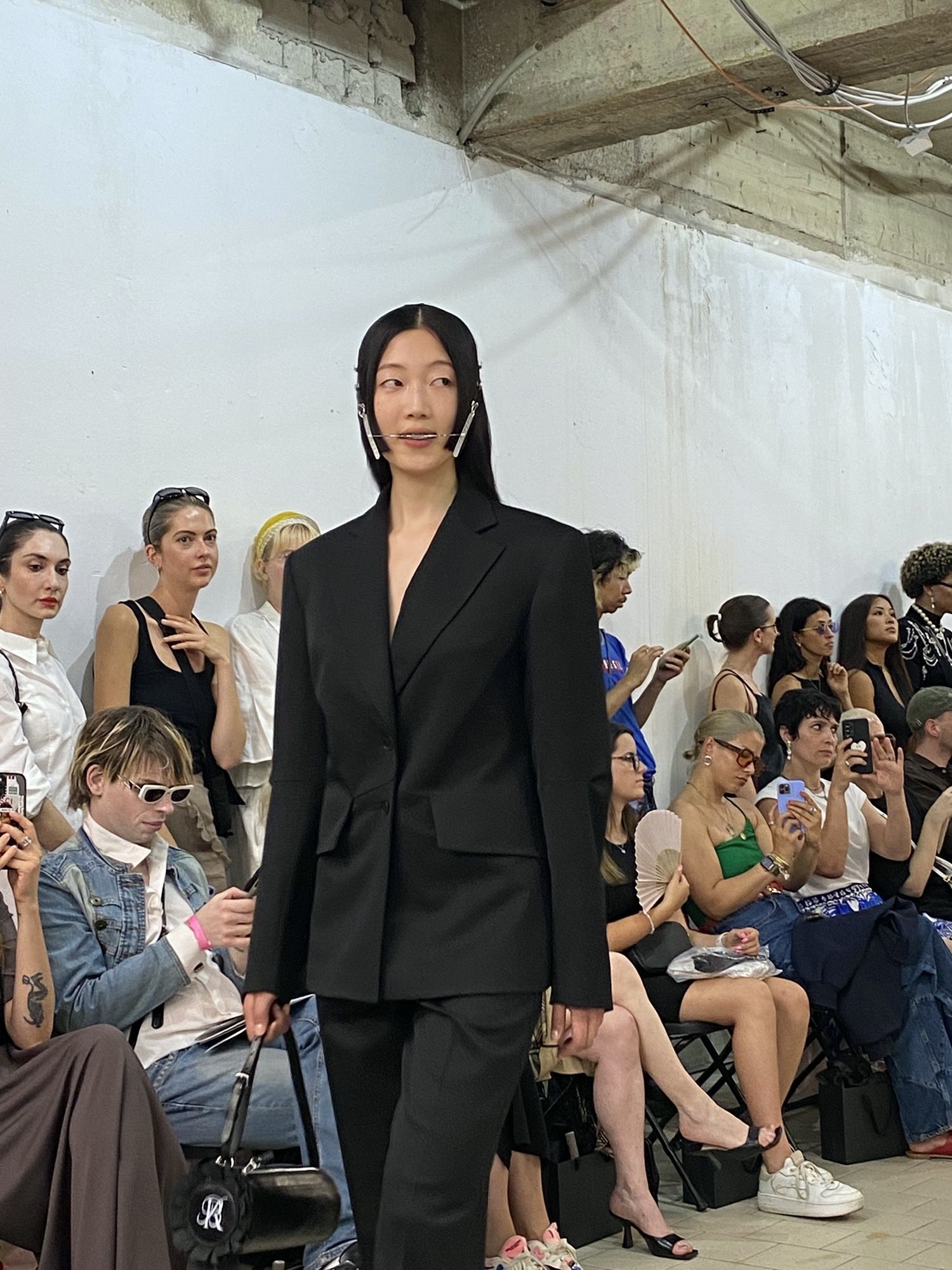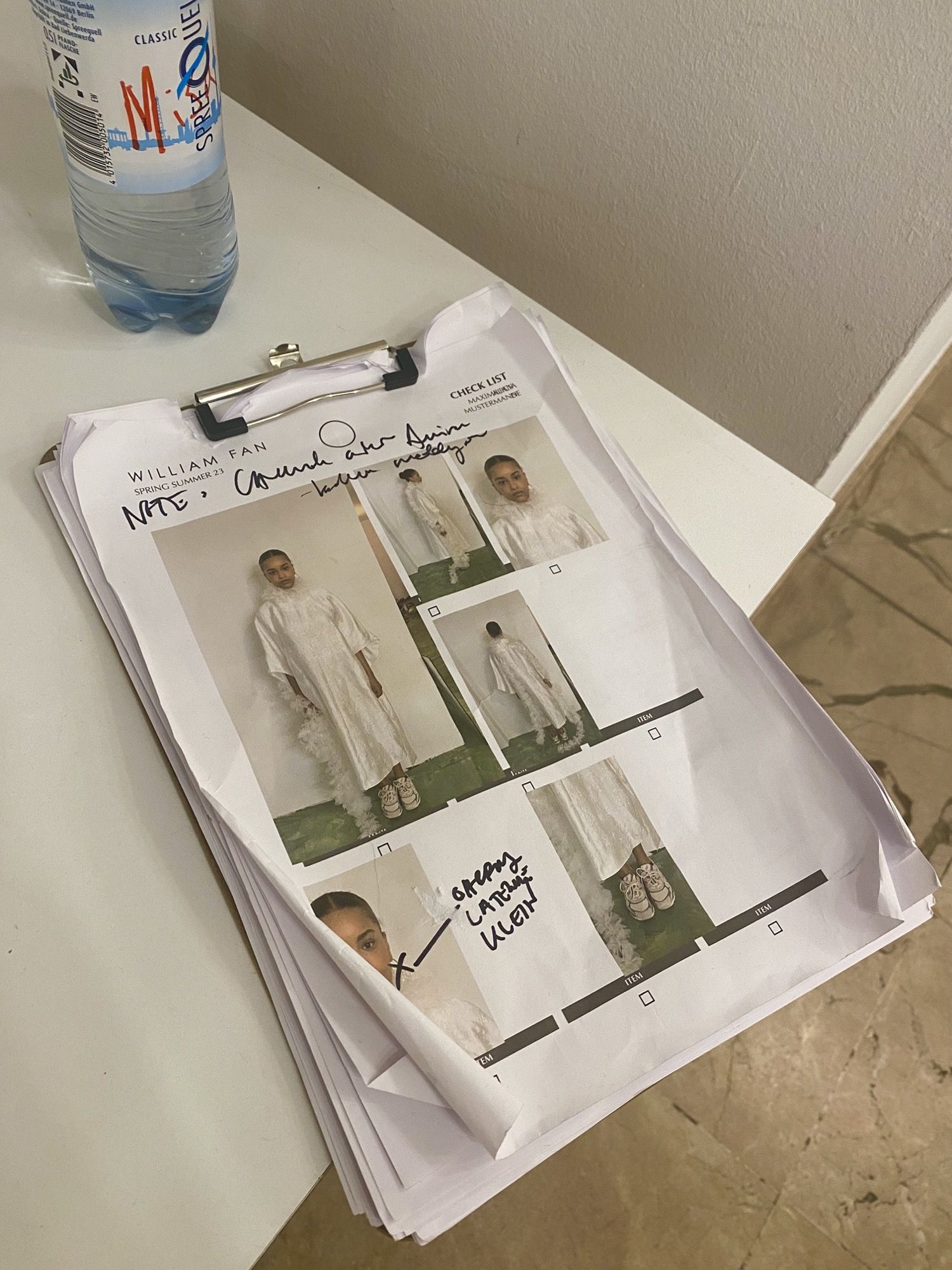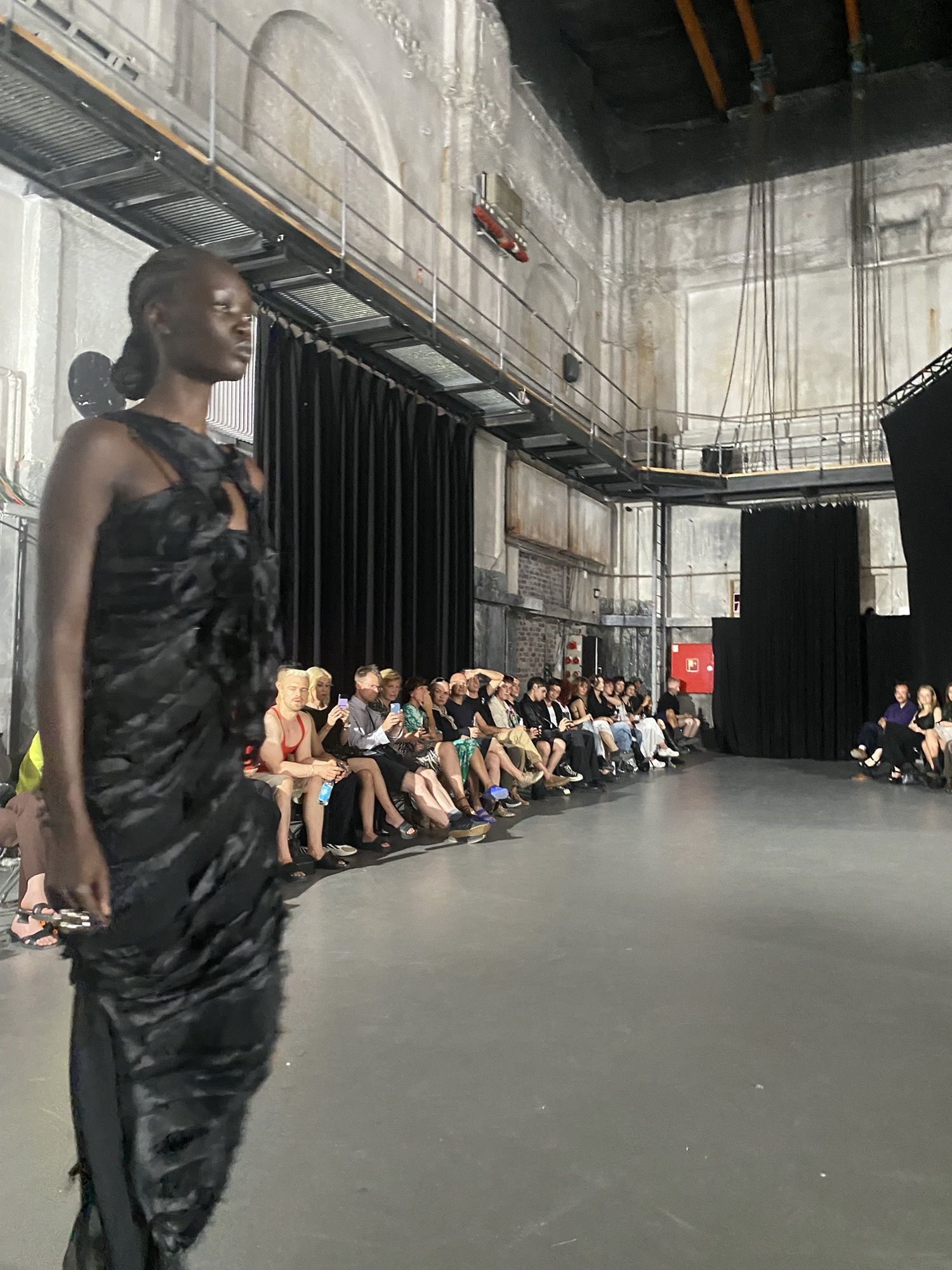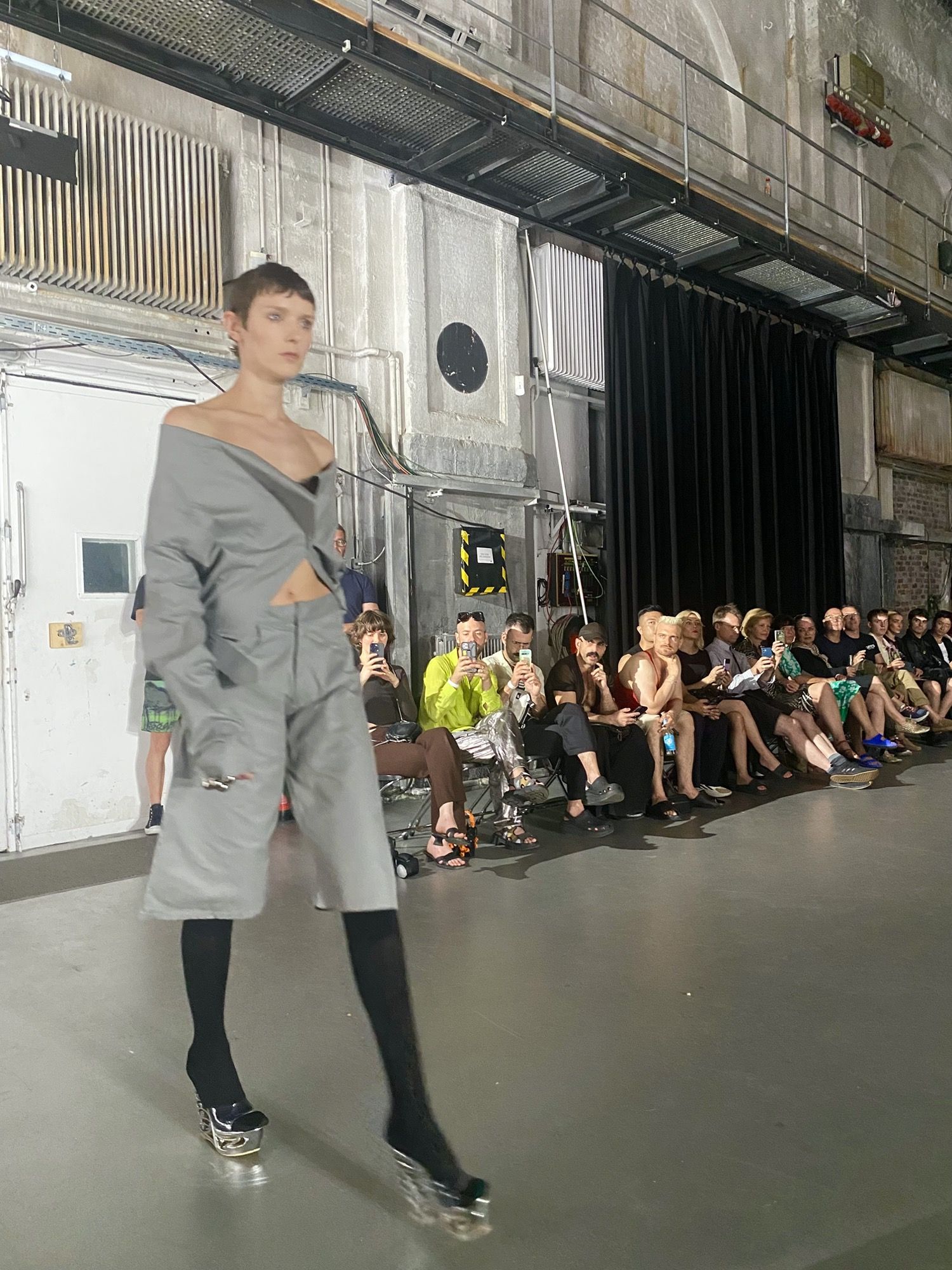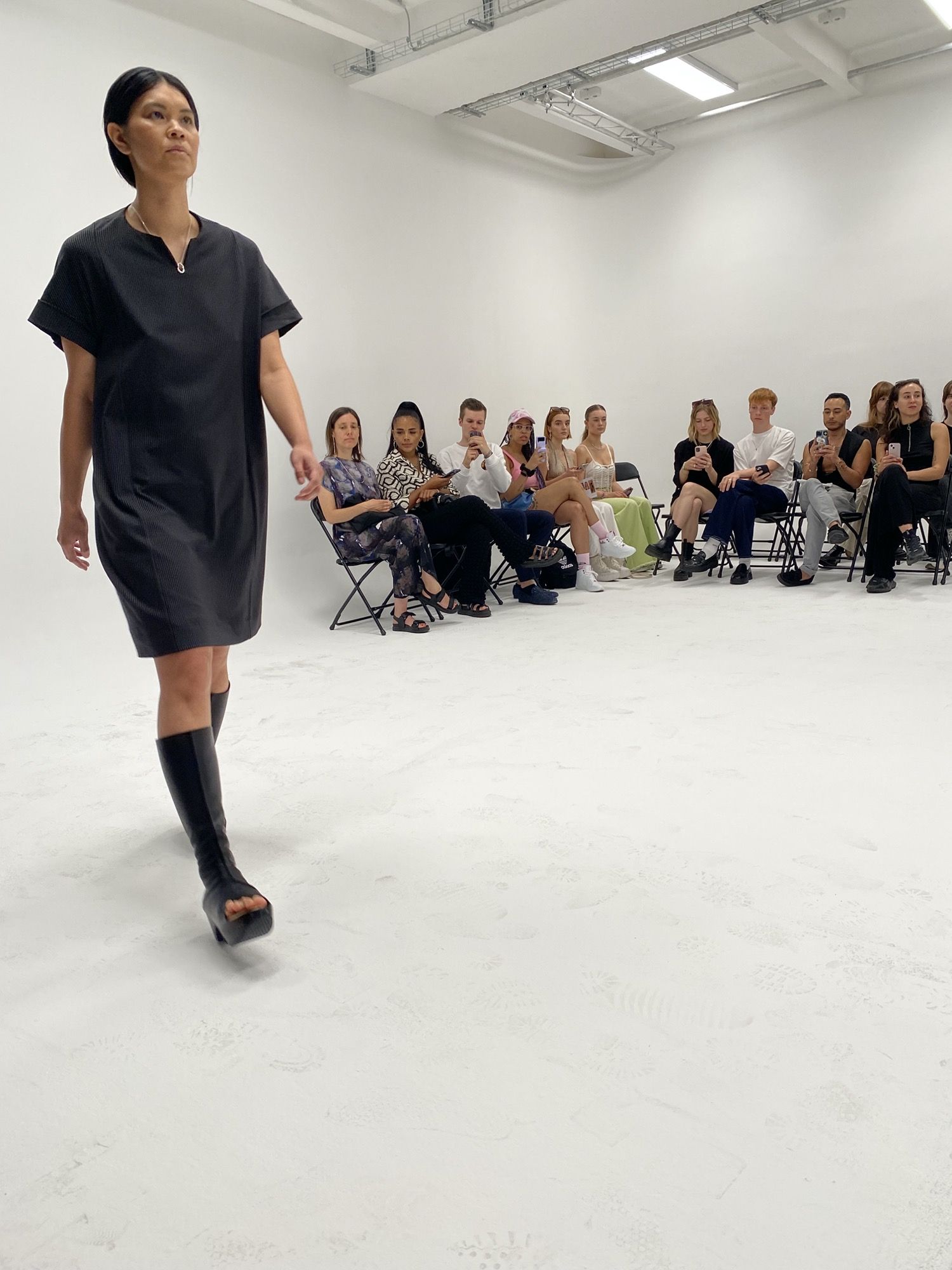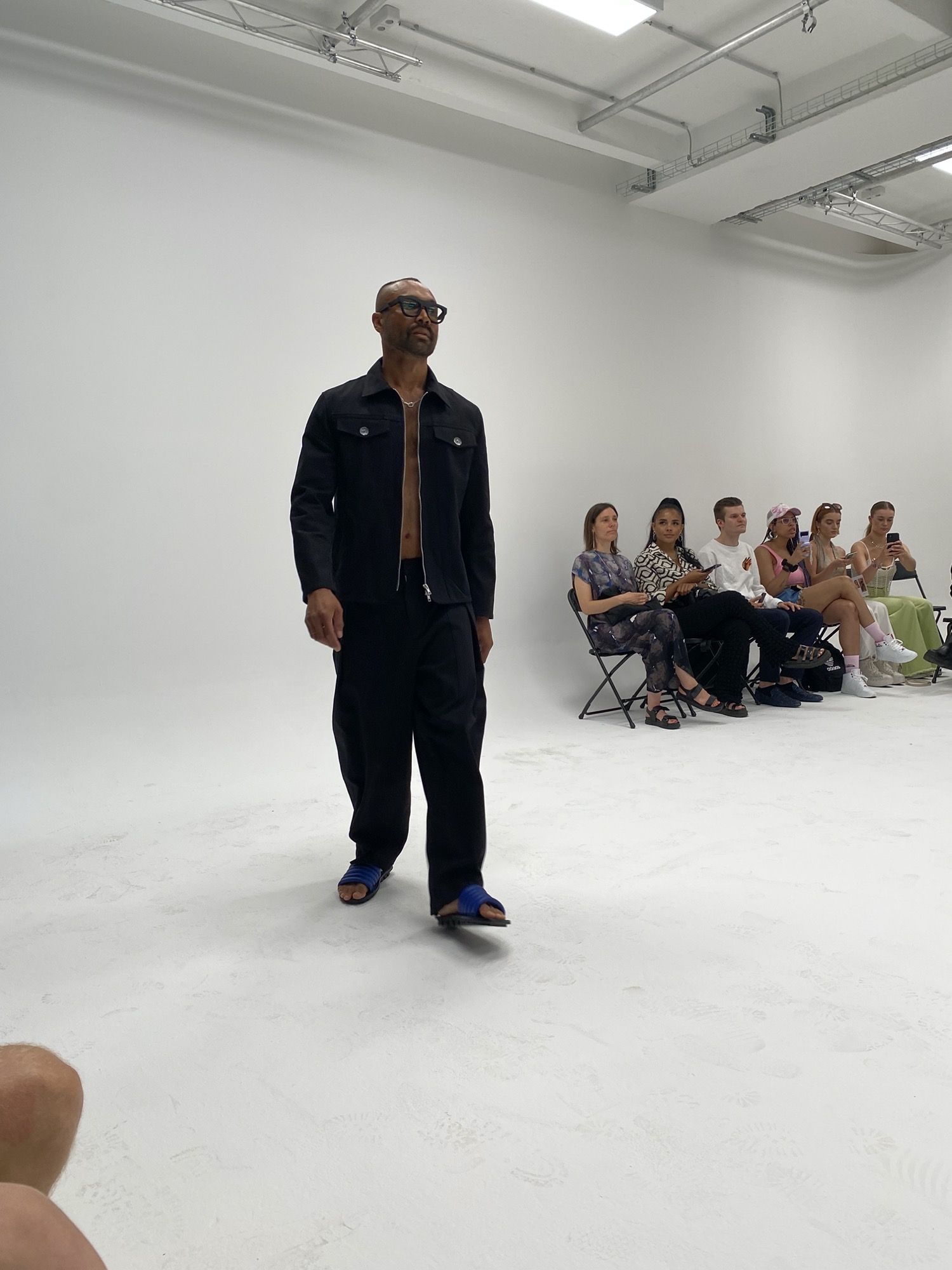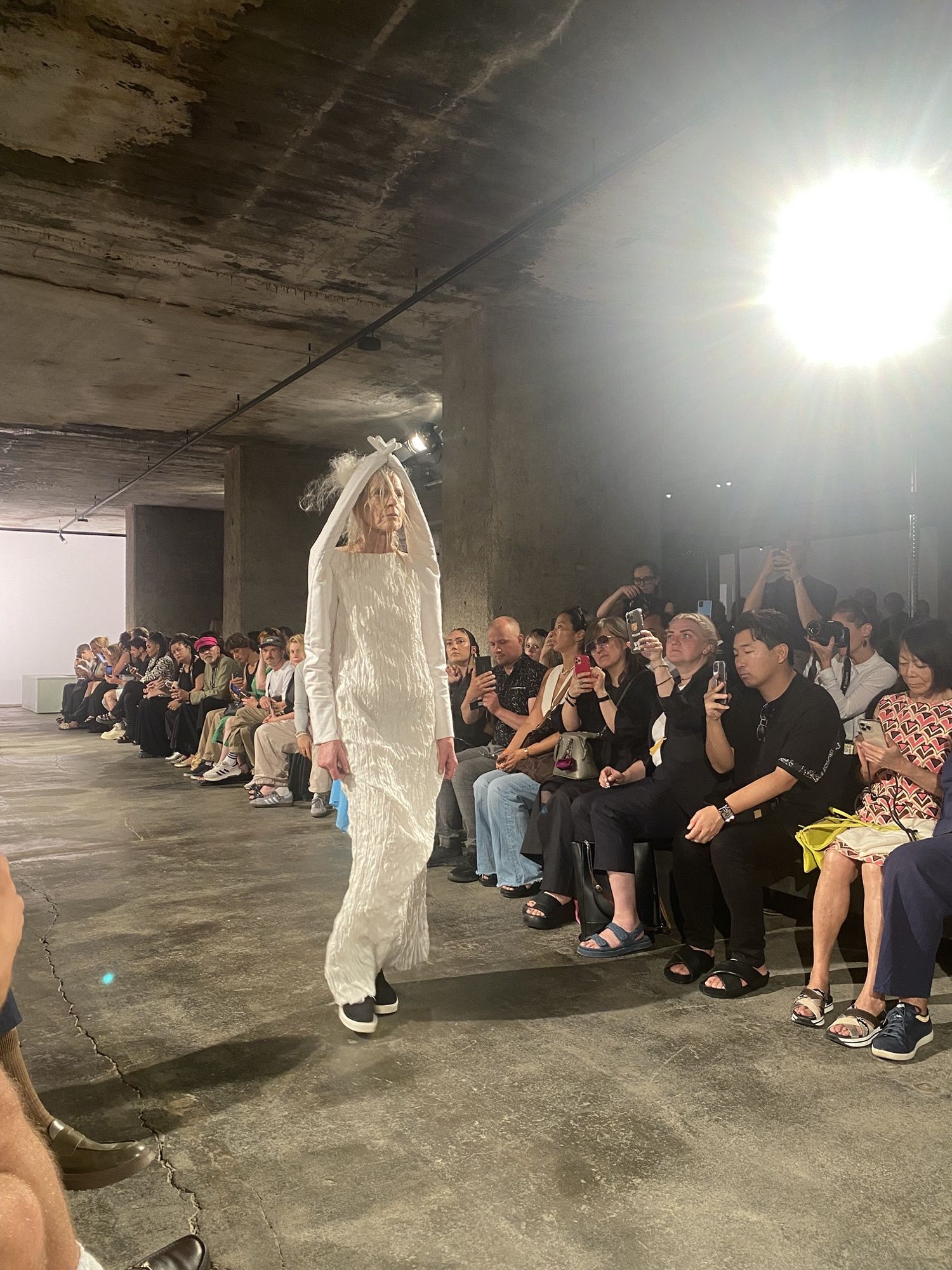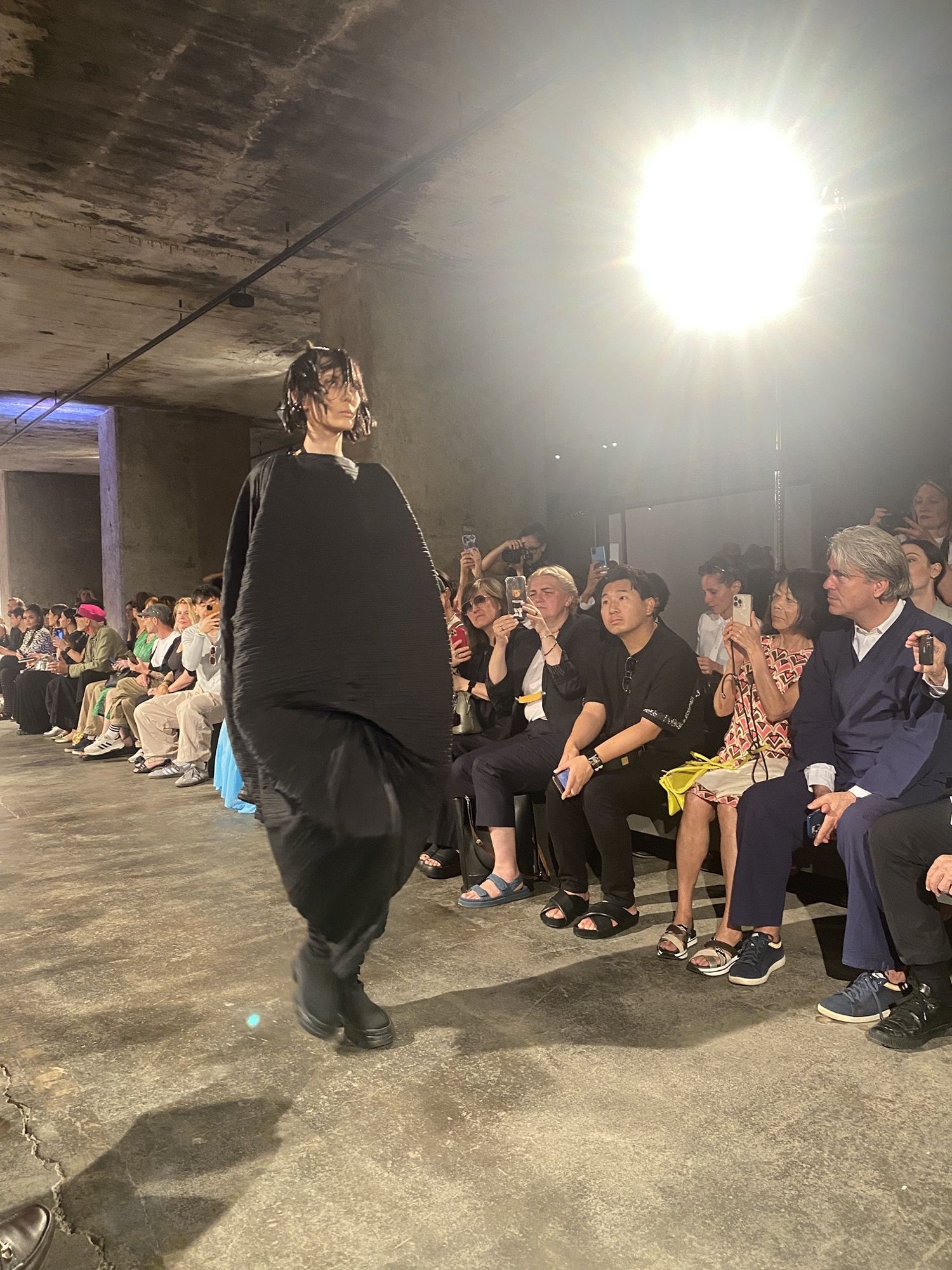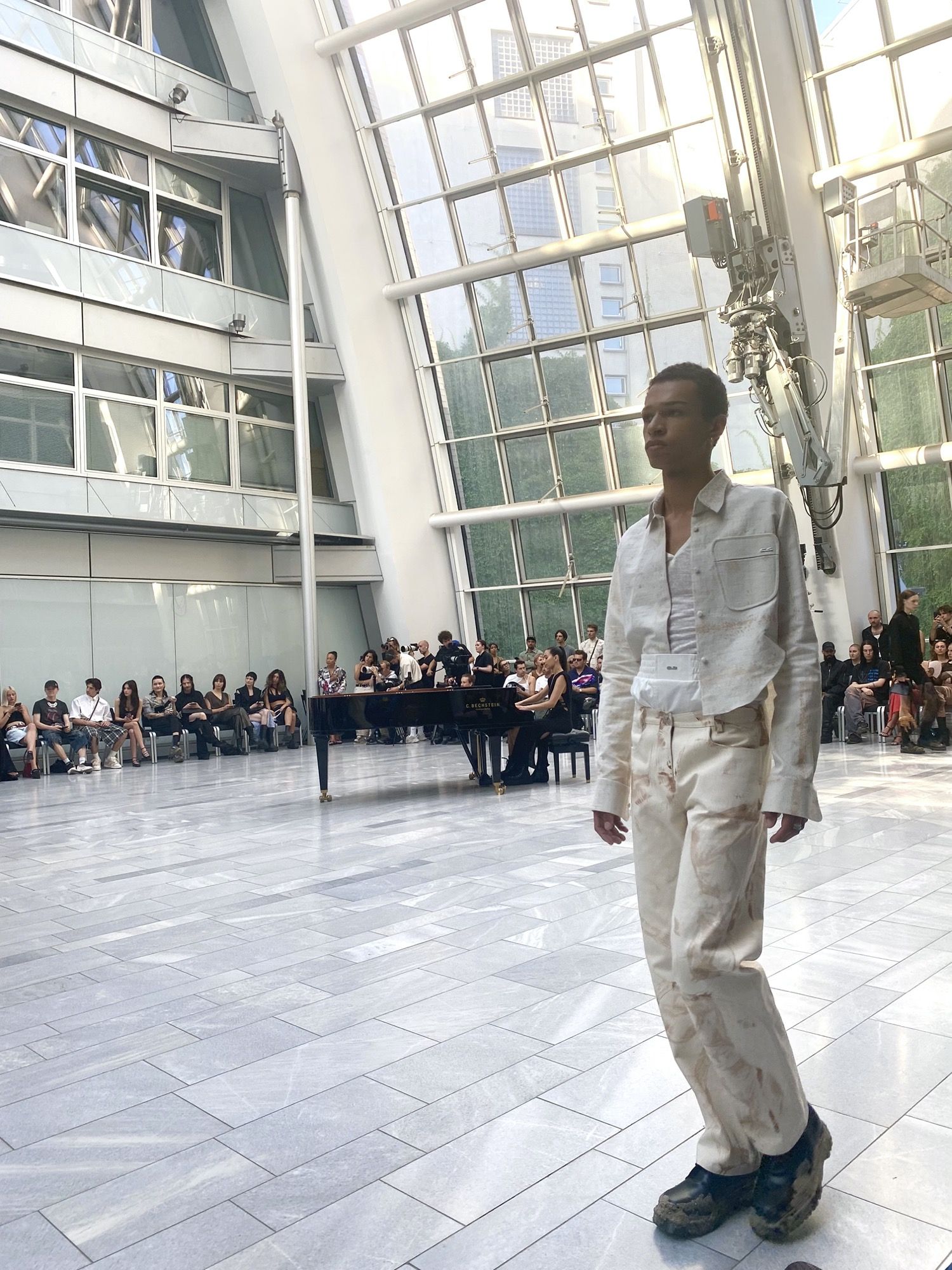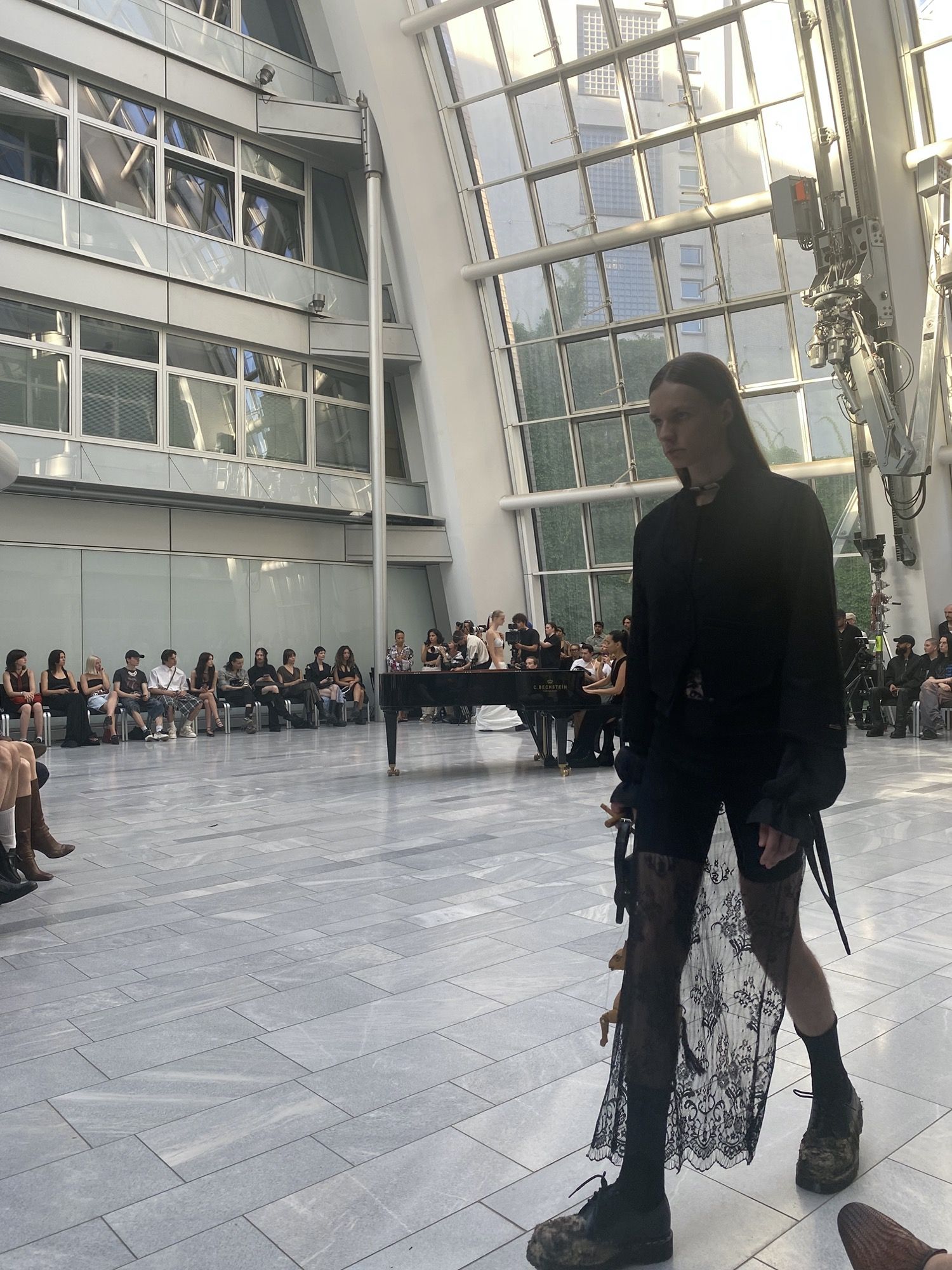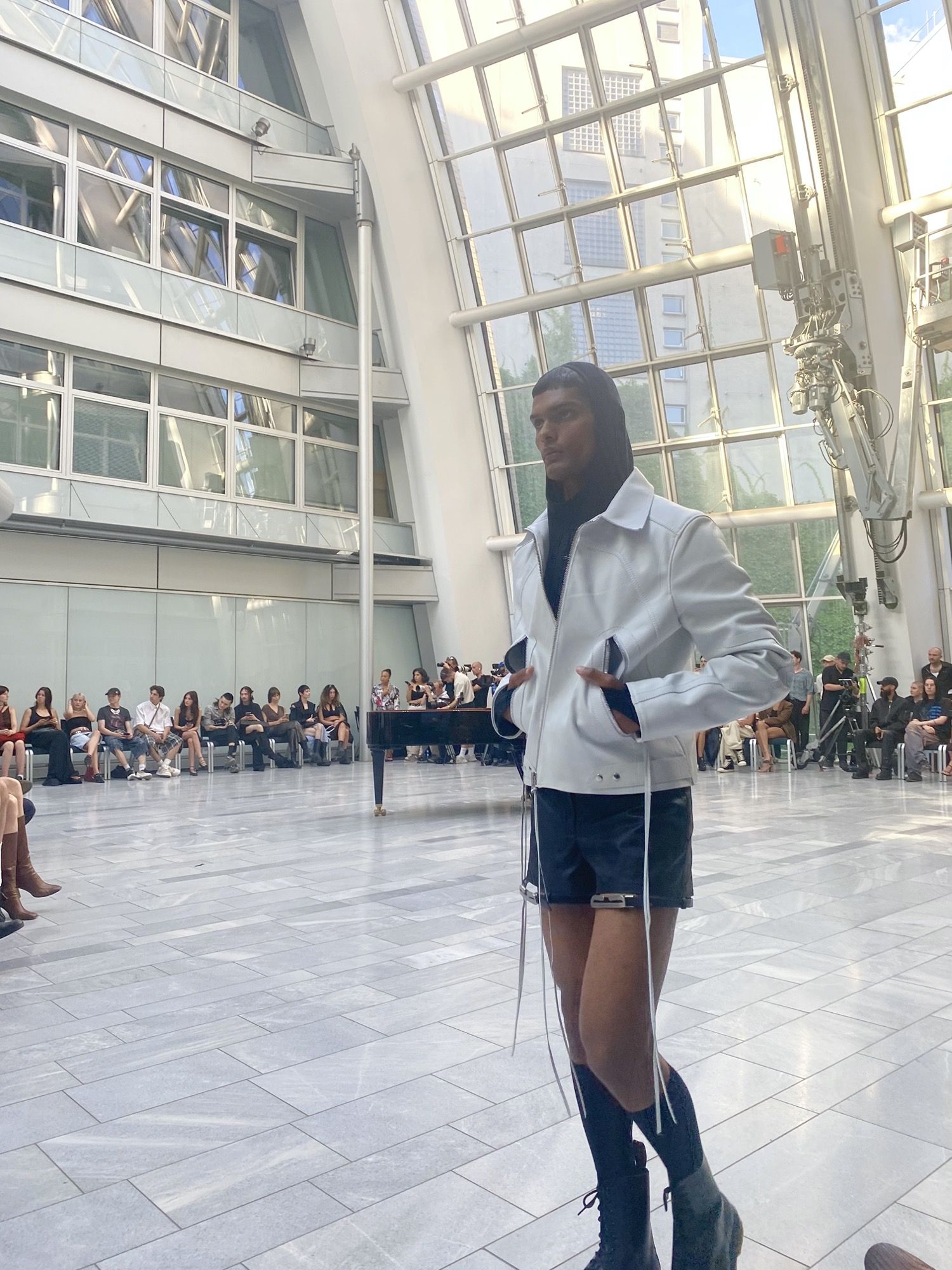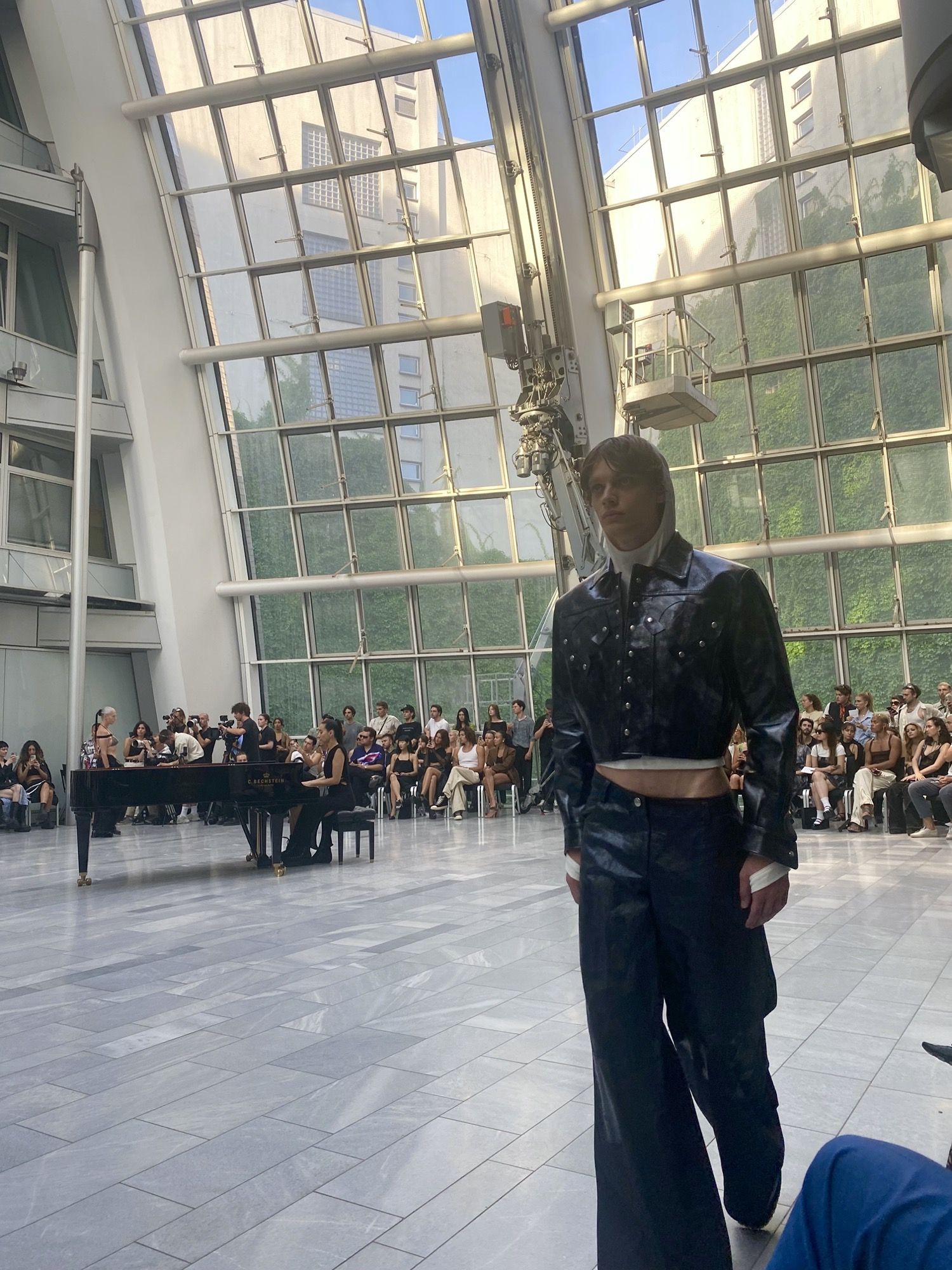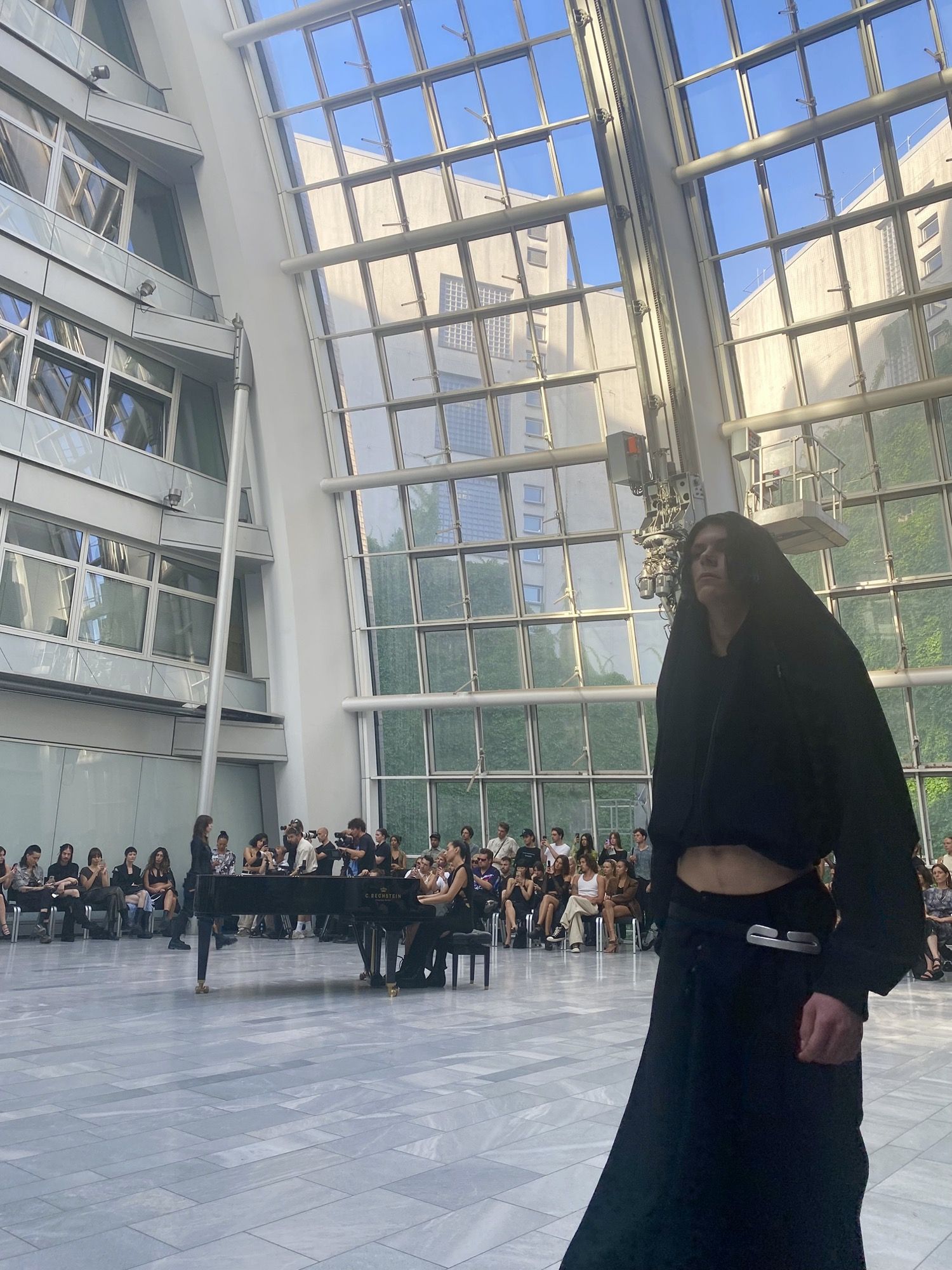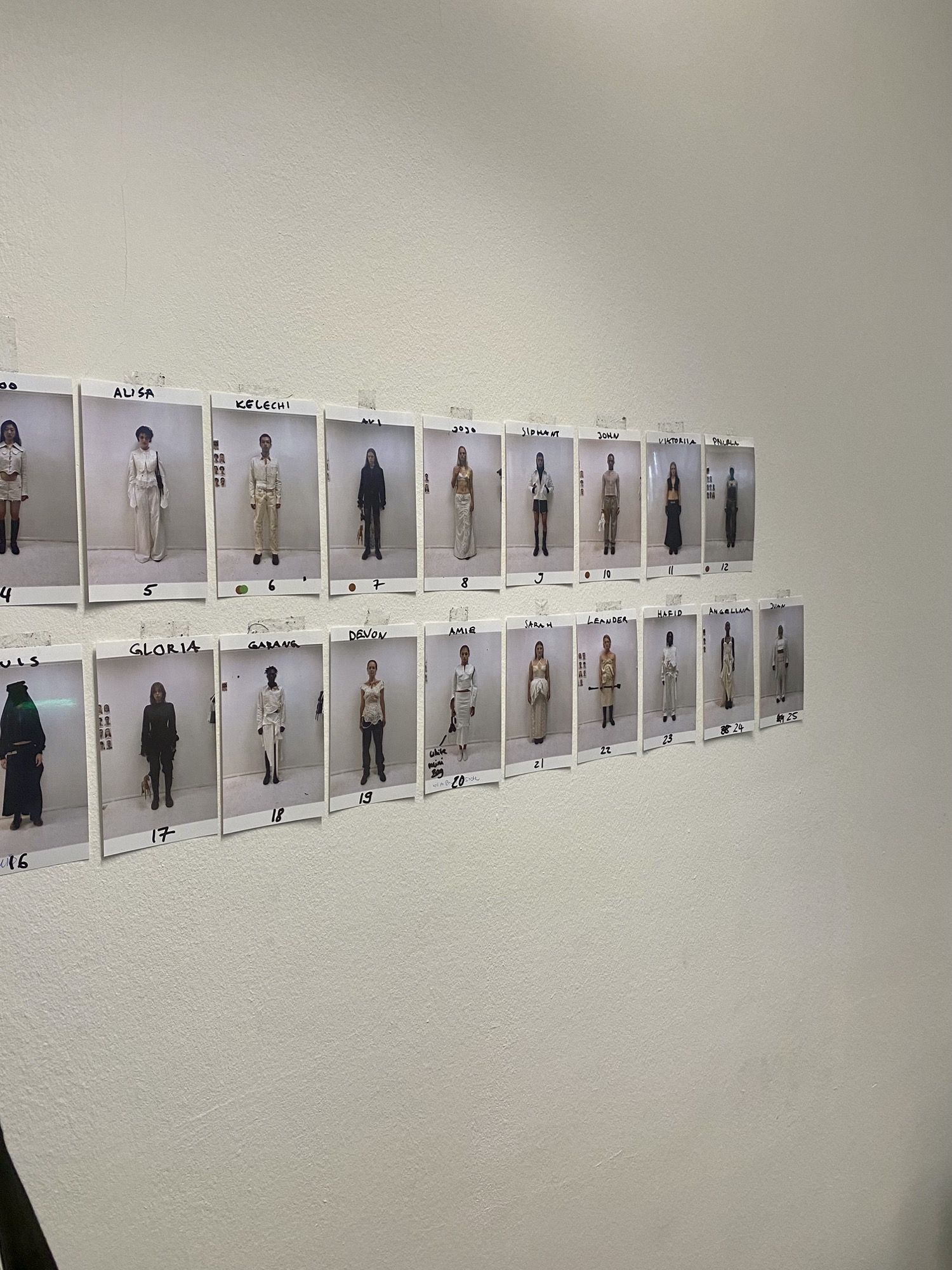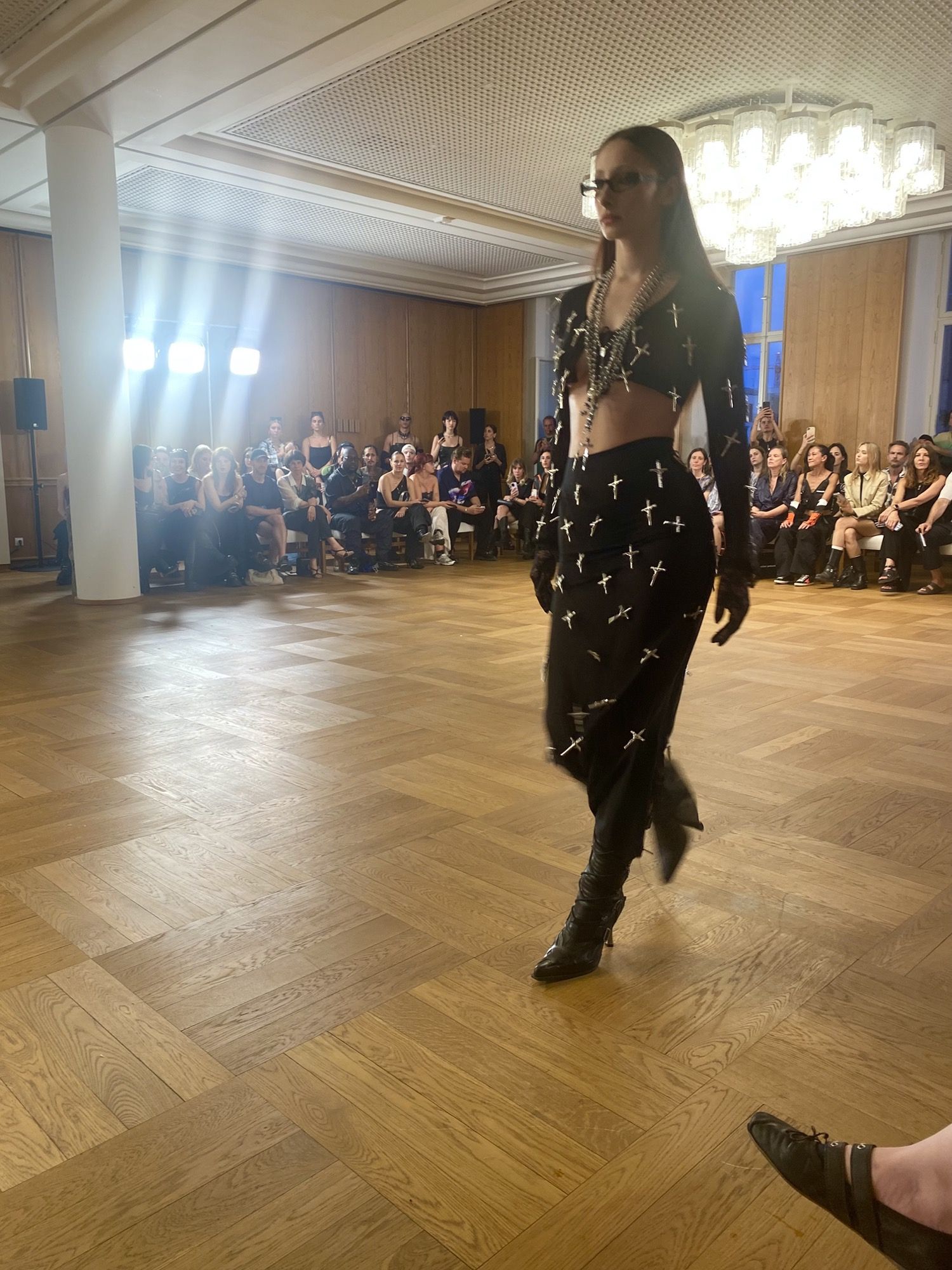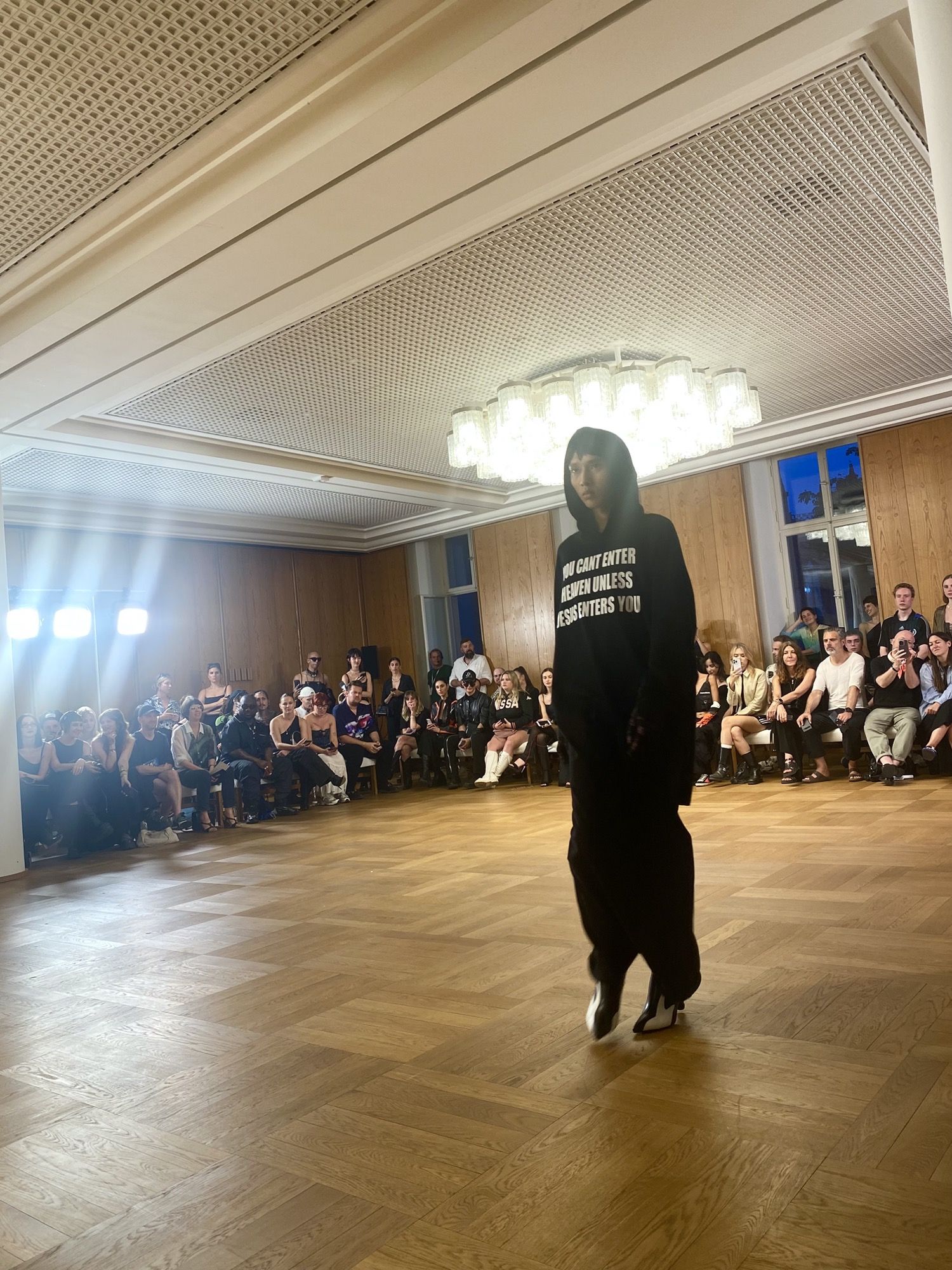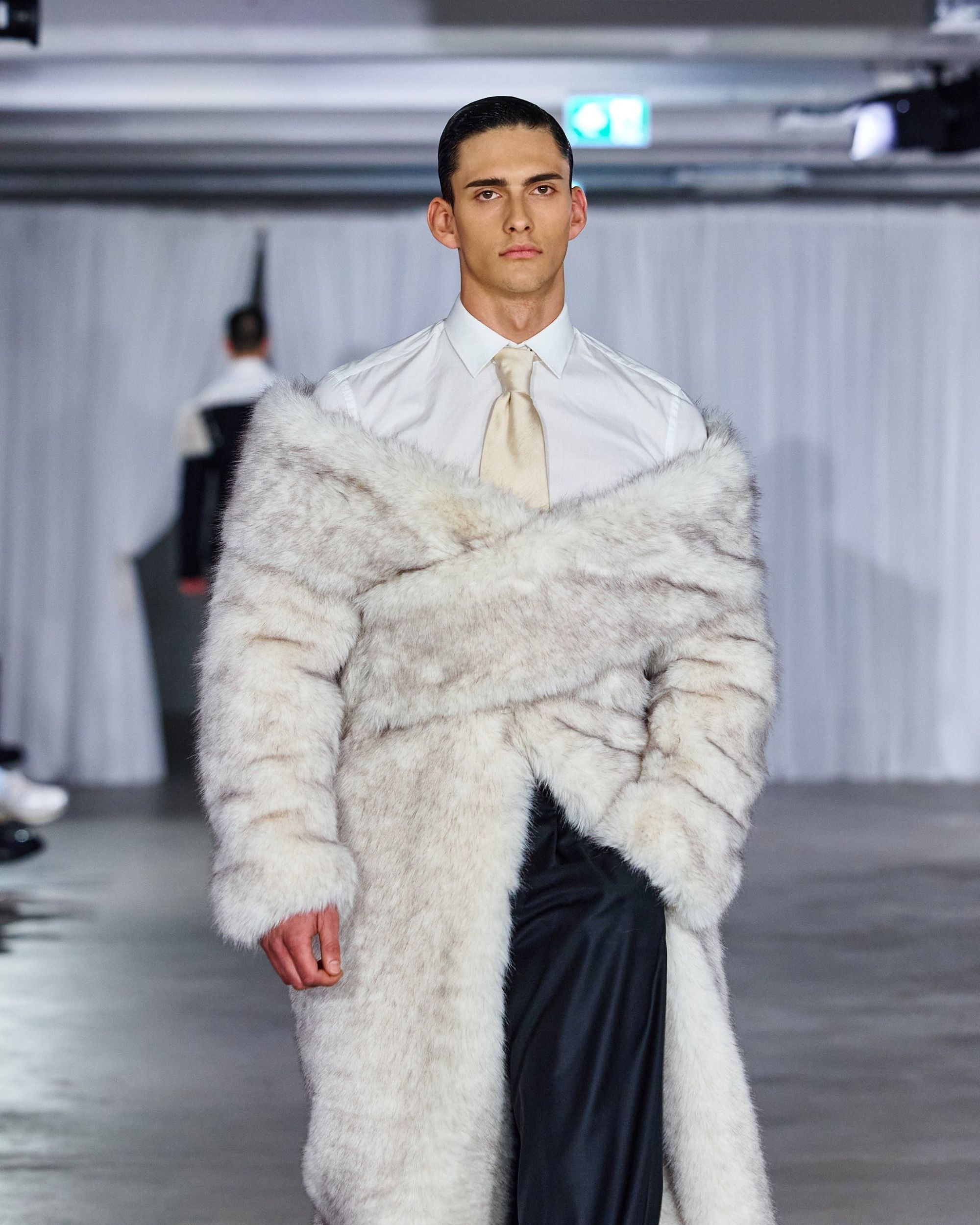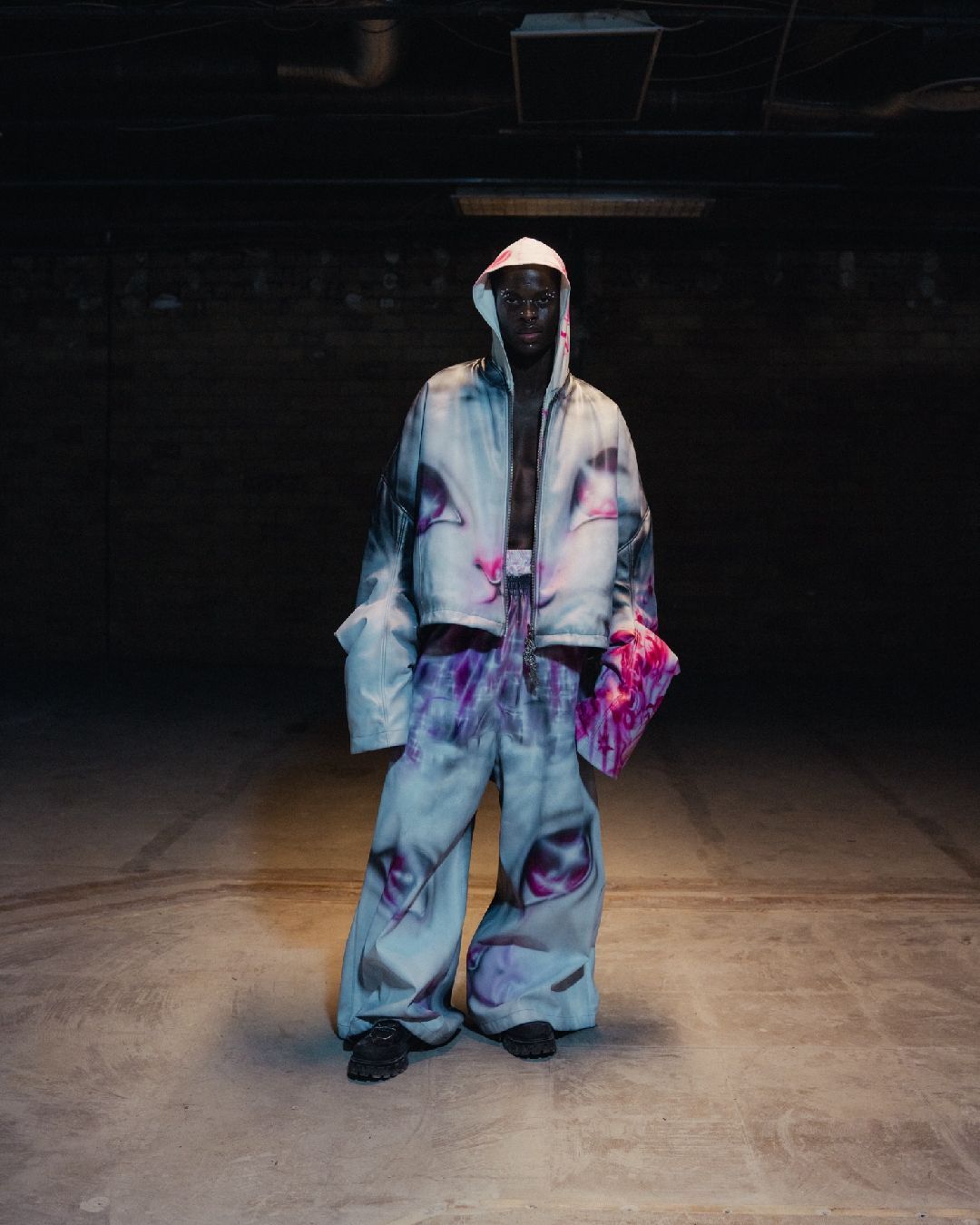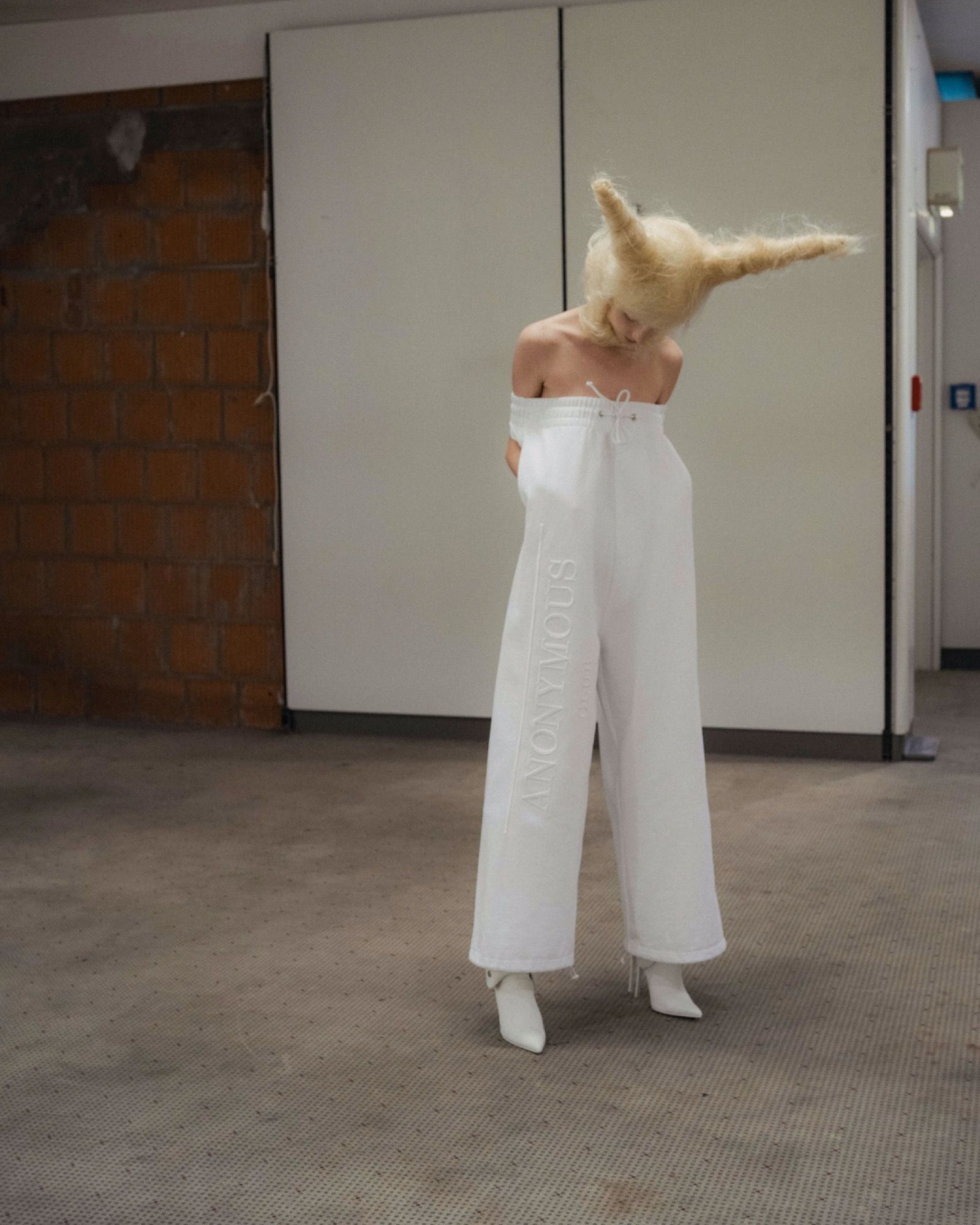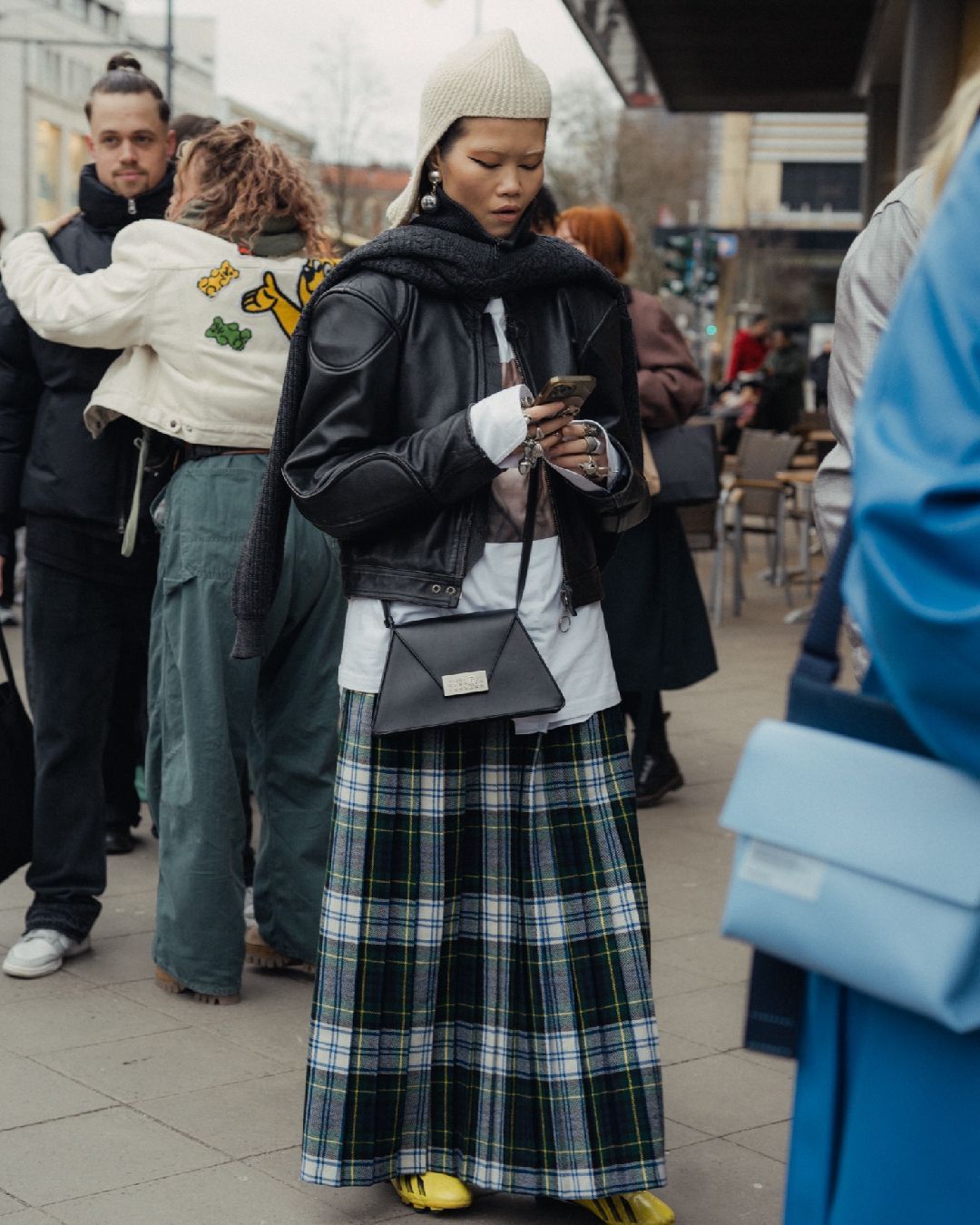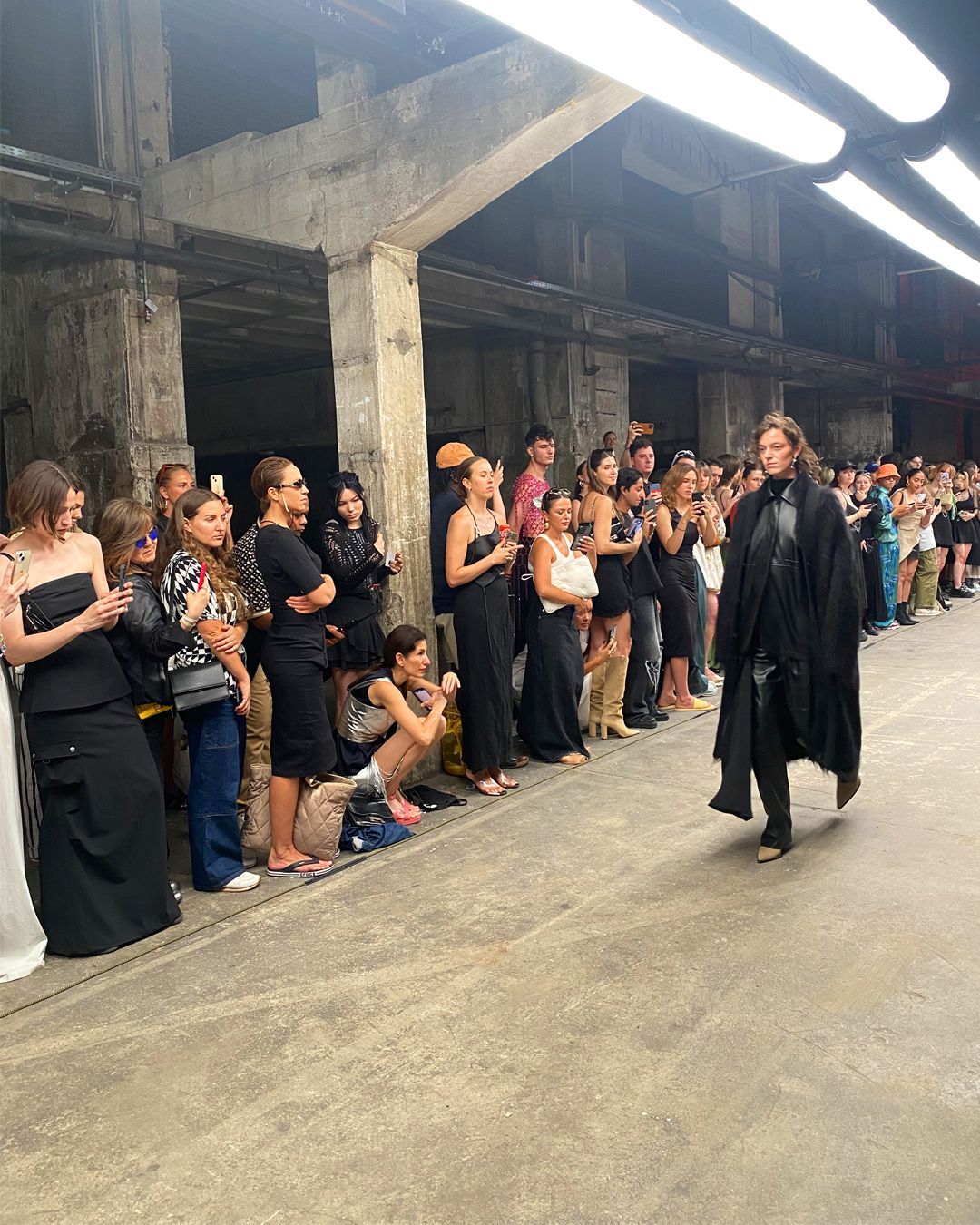
At Berlin Fashion Week, fashion is all about perspective Can German Fashion Week really aspire to a leading role on the European scene?
While Milan and Paris now seem to be two unattainable realities, in the mechanisms that govern the often complex fashion system there is a group of world capitals ready to take a prominent place in Fashion Weeks. If Copenhagen now seems to be projected toward a starring role, the next European city ready to apply could be Berlin, which welcomed a three-day event packed with shows from July 10 to 12. The cultural but certainly not economic capital of Germany, the proposal staged during Berlin Fashion Week is the perfect representation of the embryonic state of a Fashion Week that on the one hand reflects the status of the German city and on the other paws to expand the commercial appeal of its brands. Realities such as Melisa Minca or Lucas Meyer-Leclère (among the names of the first day) move in perfect antithesis to ODEEH, proposing an idea of fashion closer to the artistic vision than the commercial one. Although this juxtaposition is applicable to most of the names seen these days, some have shown the ability to move somewhere between the two worlds: this is the case of Litkovska, Lilia Litkovska's Ukrainian brand that brought to the runway an idea of tailoring that is as classic as it is interesting to the point that it does not disfigure even on more prestigious stages; but also the post-apocalyptic fashion of Sia Arnika and the visual imagery proposed by Richert Beil.
If William Fan confirmed its status as a brand with a more international and commercial scope with a grandiose show in the setting of a festively decorated Gropius Bau, SF10G was the real star of Berlin Fashion Week. Everything from the setting to the choice of a soundtrack played by the german composer M E R E D I helped elevate a collection that felt like a journey through the childhood memories of its designer, Rosa Marga Dahl. Honorable mentions to DZHUS, a witty between CdG and Rick Owens that makes transformation its strong point (during the show the designer concretely put her hand to the looks, radically transforming them into an idea that is interesting to see but would perhaps require a different execution), and Acceptance Letter Studio, which combined performance with the product with a show that had all the makings of going viral.
And between Milk of Lime's trip to the planetarium and the stifling heat of MARKE's show, closing Berlin Fashion Week was NAMILIA with a show devoted to excess. Between inscriptions that bordered on blasphemy("You can't enter heaven unless Jesus enters you") and an abundance of crosses that you don't even see on Sundays at Mass, everything in the idea of designers Nan Li and Emilia Pfohl was meant to be exaggerated: from the looks, which alternated dresses with kilometer-long trainers and others far more scarce, to the accessories, above all a huge Birkin that will surely give work to the Hermès legal team. But beyond how effective some provocations may still be, NAMILIA offers the perfect yardstick by which to measure the state of Berlin Fashion Week. Growing, for sure, but also forced to choose between product and performance. A process that takes time but, as it should, we are ready to follow closely.










































